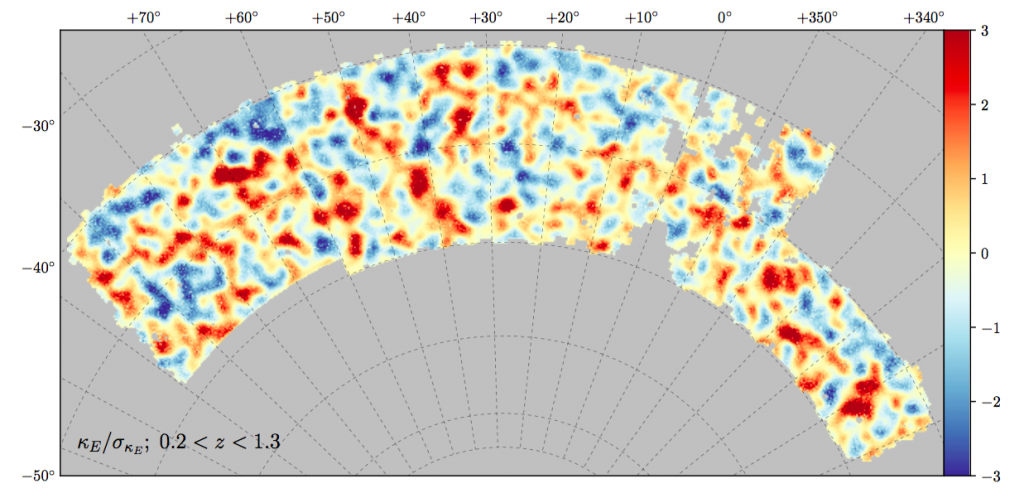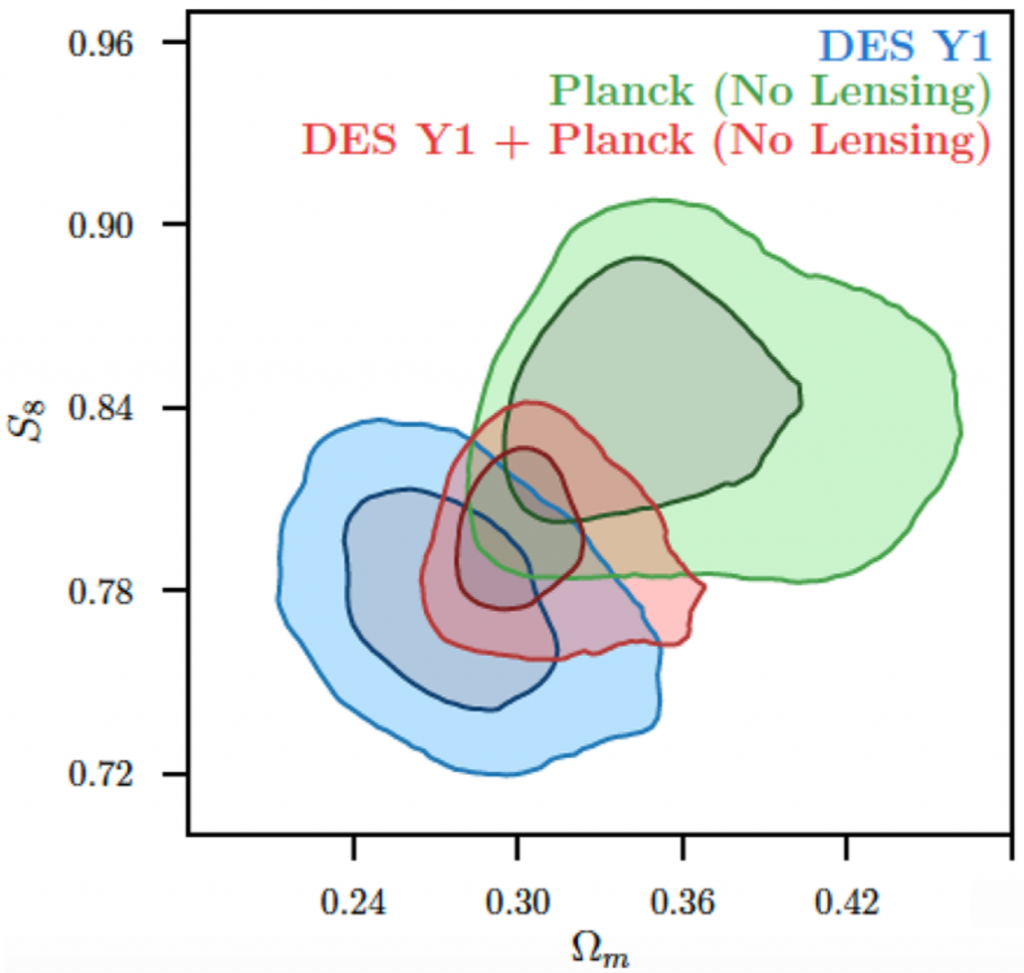There is overwhelming evidence that most of the matter in the universe is in a “dark” form that neither emits nor blocks light, and is therefore invisible to even the largest telescopes. While the detailed nature of this “dark matter” remains unknown, its gravitational interactions can be used to detect it and study its spatial distribution as a function of cosmic time, which, in turn, depends on the nature of the mysterious “dark energy” responsible for the current accelerated expansion of the universe. Particularly relevant is the so-called “weak gravitational lensing” effect, in which the observed shapes of distant galaxies are slightly modified by the gravitational pull of the masses between them and us. Then, the statistical properties of a large set of images of distant galaxies can be studied to determine the distribution of the intervening matter, which is mostly dark.
The Dark Energy Survey (DES) is an international collaboration of 350 scientists from 28 institutions in 8 countries that is surveying an eighth of the sky using DECam, a 570-megapixel camera installed at the Blanco 4-meter telescope in the Cerro Tololo Inter-American Observatory in Chile. Looking at the data from the first season of observations (2013/14), DES has measured the shapes of about 35 million distant galaxies. Combining the measurement of the correlations between the shapes of these distant galaxies (sources) with the correlations in the positions of closer galaxies (lenses) and with the cross-correlations between the shapes of the sources and the positions of the lenses (a measurement led by IFAE), DES has produced the most precise determination of the clustering of the (mostly dark) matter (fig. 2). This is the first direct measurement that is as precise as those coming from the cosmic microwave background radiation, which is sensitive to the tiny inhomogeneities when the universe was 380000 years old, which can then be extrapolated to predict the large inhomogeneities we see today. The agreement between this extrapolation and the DES direct measurement provides a stringent test of the current cosmological model, with a cosmological constant as the dark energy.
Reference

